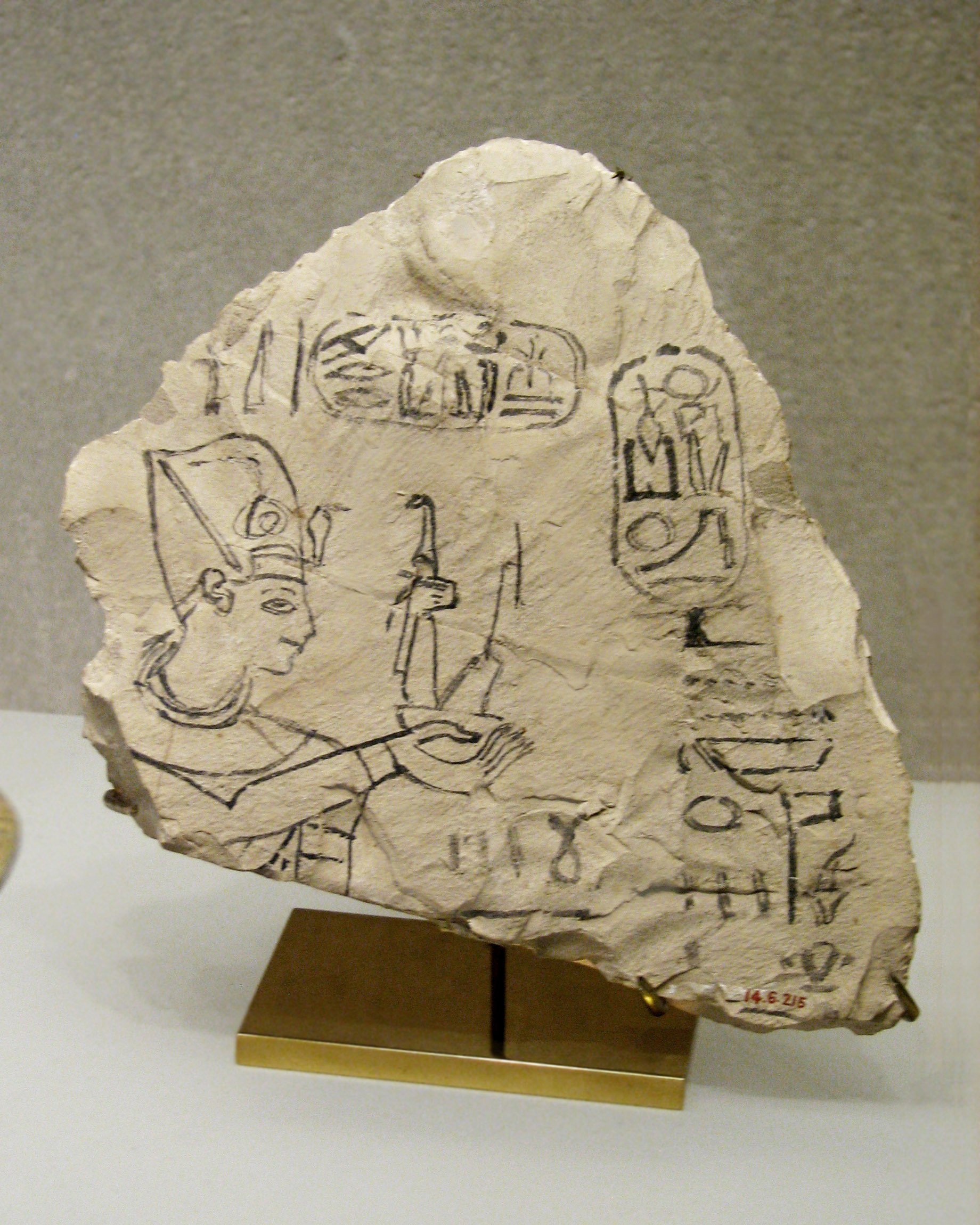
Ostraca with Ramsesside King Offering Ma'at
(MMA 14.6.215)

Ostraca with Ramsesside King Offering Ma'at
(MMA 14.6.215)
|
The king with this gesture is affirming that he will uphold Ma'at, and thereby seek what is ethically right and true.
From Digitalegypt:
Figured Ostraca "The subject matter varies greatly, and, without record of context or in instances of secondary deposition, function is often difficult to ascertain; often figured ostraca are interpreted as evidence for the training of artists, as in Deir el-Medina and the Ramesseum, but this is not made explicit by context or by accompanying writing."
  
|